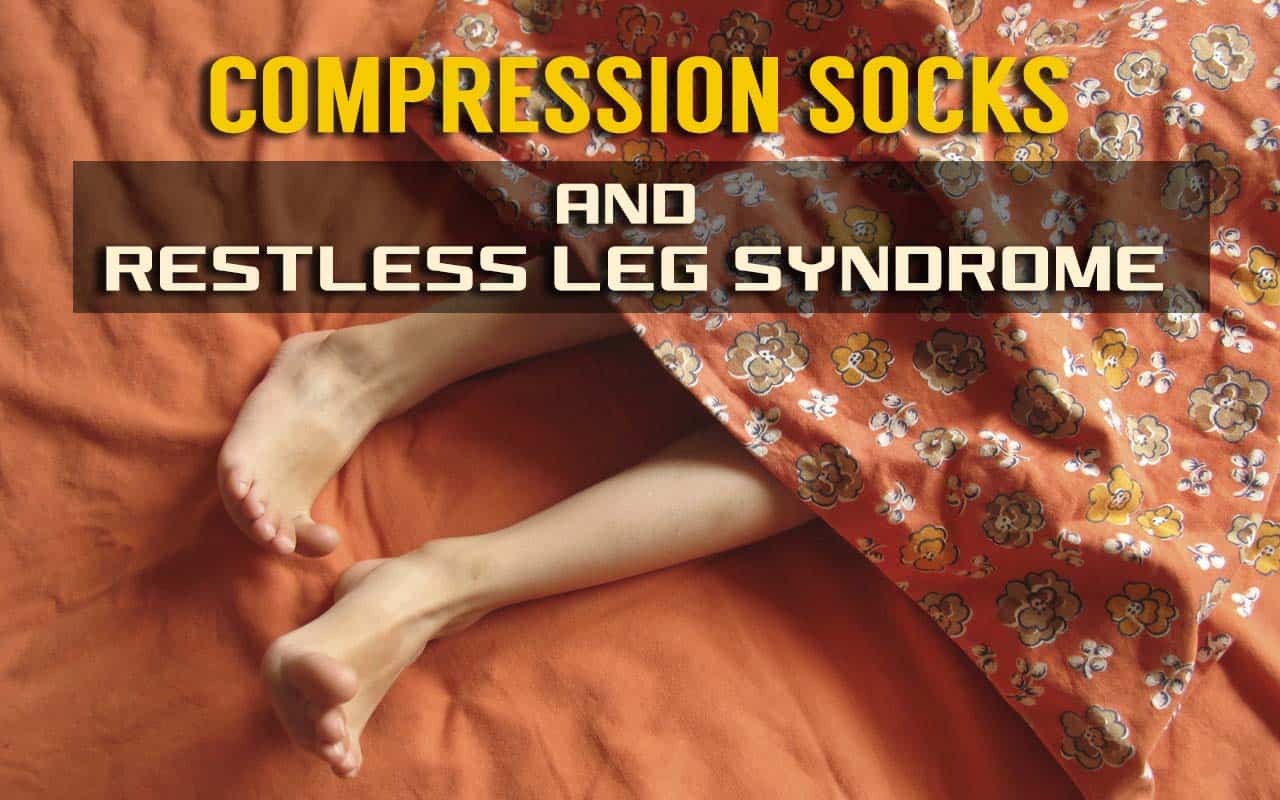
Restless Leg Syndrome (RLS) is a neurological disorder that causes an uncontrollable urge to move one’s legs, often accompanied by unpleasant sensations. The symptoms typically flare up during periods of inactivity, particularly at night, leading to disrupted sleep and significant discomfort.
In seeking relief, many individuals have turned to compression socks as a non-invasive solution to alleviate the symptoms of RLS. The gentle, steady pressure these socks provide can help improve circulation in the legs, reducing the severity of symptoms for many who experience this condition.
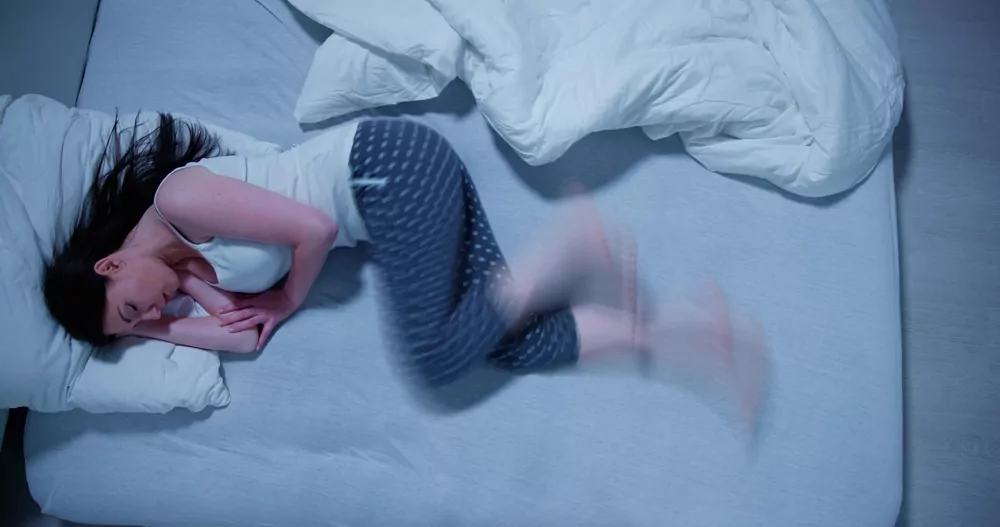
Compression socks offer several advantages for those struggling with RLS, including increased blood flow and muscle support. By applying graduated pressure to the leg muscles, they may mimic the effects of a soothing massage. This can not only bring immediate relief from the discomfort associated with RLS but also contribute to long-term health benefits.
Moreover, by enhancing circulation and supporting venous return, they can play a role in broader health improvements, including reducing swelling and preventing blood clots. Choosing the right type of compression socks and incorporating them into a wider strategy for managing RLS can lead to significant improvements in daily comfort and sleep quality.
In the research on Restless Leg Syndrome (RLS), also known as Willis-Ekbom Disease, proper diagnosis and understanding of causes are essential for managing this condition.
RLS manifests with an uncontrollable urge to move the legs, often accompanied by uncomfortable sensations. Symptoms typically occur during periods of inactivity, especially at night. Diagnosis is primarily based on patient history, symptoms, and ruling out other conditions. It’s important to describe the sensations accurately; common descriptions include tingling, a “creepy-crawly” feeling, and aching.
The causes of RLS can be genetic or secondary to other conditions, such as iron deficiency. Studies suggest a strong genetic component, especially when RLS onset is before the age of 40. Additionally, low iron levels within the brain can be a contributing factor, even if blood tests show normal iron stores. In terms of risk factors, pregnancy can temporarily exacerbate or trigger RLS, and chronic conditions like renal failure can also increase risk.
Compression socks are not only a staple in wardrobes for athletes but also a valuable tool in medical therapy, particularly for individuals suffering from conditions like Restless Leg Syndrome (RLS).
Compression socks are designed to apply graduated pressure to the legs, which is crucial in promoting blood flow from the lower extremities back to the heart. The types of compression socks vary, typically ranging from light pressure models suitable for everyday wear to high-pressure options recommended for compression therapy. Then there are anti-embolism stockings, specifically engineered to prevent blood clots in the immobile or bedridden.
For those dealing with RLS, compression socks provide a level of pressure that can alleviate uncomfortable symptoms. Utilizing graduated pressure, these socks support the legs’ muscles and blood vessels, reducing the sensations that drive the need for constant leg movement. By improving blood flow and providing a gentle massaging effect, they serve as a non-invasive remedy, especially useful at night when symptoms can be most bothersome.
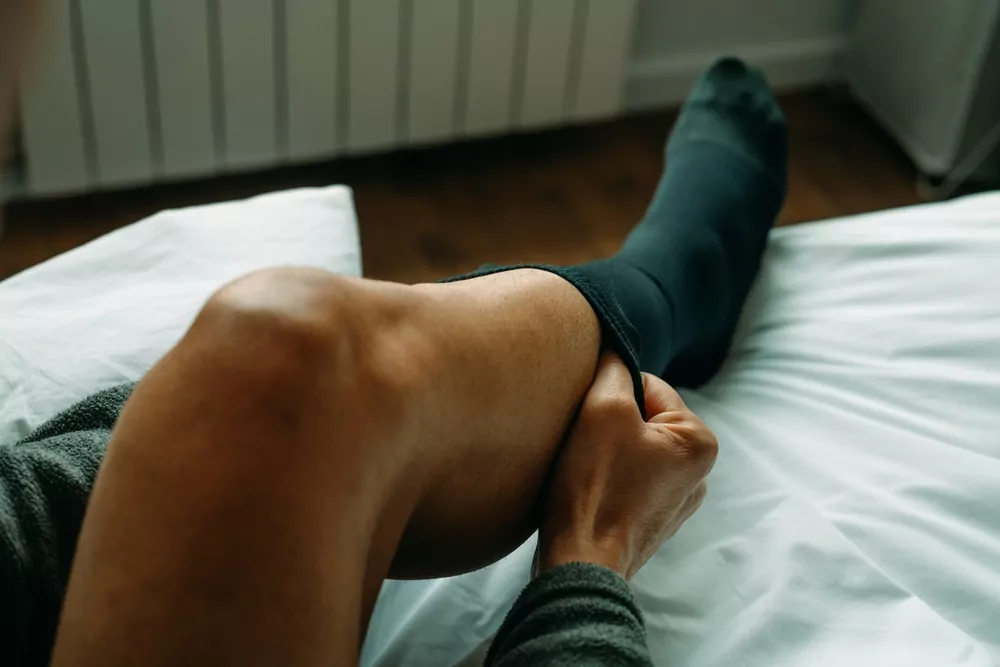
While my focus is often on the relief that compression socks provide for Restless Leg Syndrome (RLS), the benefits of these garments extend to a multitude of circulatory issues. Their design plays a vital role in enhancing blood circulation, reducing discomfort, and preventing serious complications.
Consistently wearing compression socks significantly aids in boosting blood circulation. They gently apply pressure to my legs, facilitating blood flow back to the heart and reducing the stress on the veins. This is especially beneficial for those spending extended periods seated or standing, which tends to impede natural blood flow.
The pressure from compression socks also contributes to a noticeable reduction in swelling. By minimizing excess fluid retention, the swelling in the lower extremities is often alleviated, leading to a reduction in the pain associated with this swelling. This has proved to be a boon for individuals managing conditions like edema or those who experience leg fatigue.
By improving overall circulation and reducing the tendency for blood to pool in leg veins, compression socks also play a role in the prevention of blood clots. Their consistent pressure helps to lower the risk of developing deep vein thrombosis (DVT), particularly for those at risk due to extended periods of immobility or pre-existing circulatory problems.
Managing Restless Leg Syndrome (RLS) goes beyond medical treatments and into daily habits. Incorporating specific lifestyle changes and home remedies can significantly alleviate symptoms.
To mitigate the discomfort of RLS, I find it essential to regularly engage in moderate exercise. This includes activities such as walking or stretching which can improve circulation and reduce symptom severity. It’s also suggested that using compression socks might help by increasing blood flow and providing a gentle massaging effect.
A balanced diet is crucial for overall health and can have a positive impact on RLS. Include foods high in iron and magnesium, as deficiencies in these minerals can exacerbate symptoms. Conversely, reducing intake of caffeine and alcohol can help, as they may trigger or worsen RLS symptoms.
Managing stress is integral to controlling RLS symptoms. Techniques like meditation, yoga, and deep breathing exercises not only reduce stress but also help improve sleep quality. Given that proper sleep hygiene is beneficial for those with RLS, establishing a calming bedtime routine is a strategy I prioritize.

When it comes to compression socks, I understand that while they offer therapeutic benefits, particularly for conditions like Restless Leg Syndrome (RLS), they are not without potential side effects and considerations that need to be addressed.
Misusing compression socks can lead to negative outcomes. It is crucial to use the correct size and compression level, as ill-fitting socks might exacerbate leg swelling or create pressure points. Compression levels are measured in millimeters of mercury (mmHg), and using compression socks with too high a pressure without medical advice may impede circulation rather than improve it.
For individuals with peripheral neuropathy, improper use could lead to reduced sensation in the feet, making it essential to regularly check for signs of skin damage or irritation.
If you have certain chronic diseases, such as diabetes, using compression socks must be done cautiously. The added pressure can affect your circulation, and if you have peripheral artery disease, the socks could potentially worsen my symptoms. Consulting with a healthcare provider is advised to ensure that using compression socks will not interfere with your condition. Personal preference also plays a role in whether you find compression socks comfortable or beneficial, as each individual’s experience can vary widely.
In my experience, effectively managing Restless Leg Syndrome (RLS) often involves a combination of professional treatments and therapies. It’s crucial to understand the different options available and how they can alleviate the symptoms.
For many individuals dealing with RLS, medication can be a cornerstone of treatment. Physicians may prescribe dopaminergic agents which are commonly used and can help reduce the uncomfortable sensations in the limbs associated with RLS. In some cases, anticonvulsants, benzodiazepines, or opioids are prescribed for their ability to decrease sensory disturbances and improve sleep. It’s important to have these medications tailored to your specific needs by a healthcare professional to ensure both efficacy and safety.
Physical therapy is a key component of managing RLS. Therapeutic exercises can help decrease tension and improve circulation in the lower limbs. In addition, sessions might include massage, which some studies suggest can aid in lymphatic drainage and provide temporary relief from RLS symptoms.
Apart from mainstream treatments, I consider alternative therapies as well. Though more research is needed, some patients find relief through practices such as acupuncture or yoga. These can complement conventional treatments and may help reduce the frequency and severity of RLS episodes.
Choosing the right compression socks is crucial because it can greatly influence the effectiveness of compression therapy for ailments such as Restless Leg Syndrome. The right fit, pressure levels, materials, and usage times are key factors.
The ideal fit for compression stockings is essential. Graduated pressure is most effective when the sock fits snugly around my ankle and lessens as it goes up my leg. To ensure this,measure your ankle, calf, and sometimes thigh to match with the appropriate size. Compression levels range from light to very firm, and the choice often depends on specific medical conditions or personal preference.
Opt for materials that balance comfort with longevity. Compression socks made of a blend of spandex and nylon offer elasticity and durability. For daily use, I recommend selecting materials that are breathable to maintain comfort throughout the day. Also consider moisture-wicking properties, especially if you plan to wear the socks during exercise or in warmer climates.
The timing and duration of wearing compression socks depend on the purpose of use. For example, wearing them during long flights to prevent blood clots or during extended periods of inactivity. If I am using them for Restless Leg Syndrome, I find wearing them for several hours during the day and particularly in the evening when symptoms may worsen is beneficial. It is also important to consult with a healthcare provider for recommendations tailored to my specific needs.
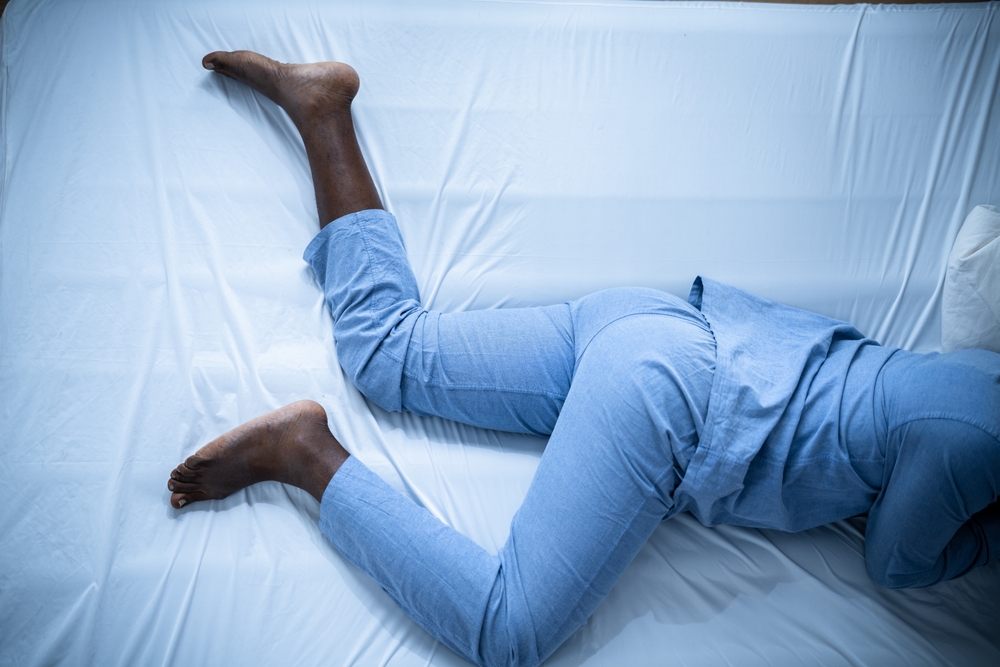
In this section, I discuss how managing daytime symptoms of Restless Leg Syndrome (RLS) and improving sleep quality can enhance daily living and address associated sleep issues.
An individual’s quality of life during the day can be significantly affected by RLS. I experience sensations that often prompt an involuntary urge to move my legs, which can lead to daytime fatigue. This is especially challenging in environments where I’m expected to remain still for prolonged periods, such as during work or travel.
To mitigate these symptoms, I’ve found that wearing compression socks has a positive effect. The increased blood flow to my lower limbs helps ease the discomfort and manage the urge to move.
When night falls, struggles with RLS can worsen, leading to sleep disturbances like insomnia. Ensuring good sleep hygiene is crucial to reduce the impact of RLS on your sleep. Here’s my nightly routine that has helped improve my sleep quality:
For those nights when RLS symptoms peak and disrupt my sleep, creating temporary relief by moving around can help. Although, I’m aware that if sleep deprivation from RLS becomes a norm, it may point toward more serious concerns like sleep apnea, and it would be wise for me to seek medical advice.
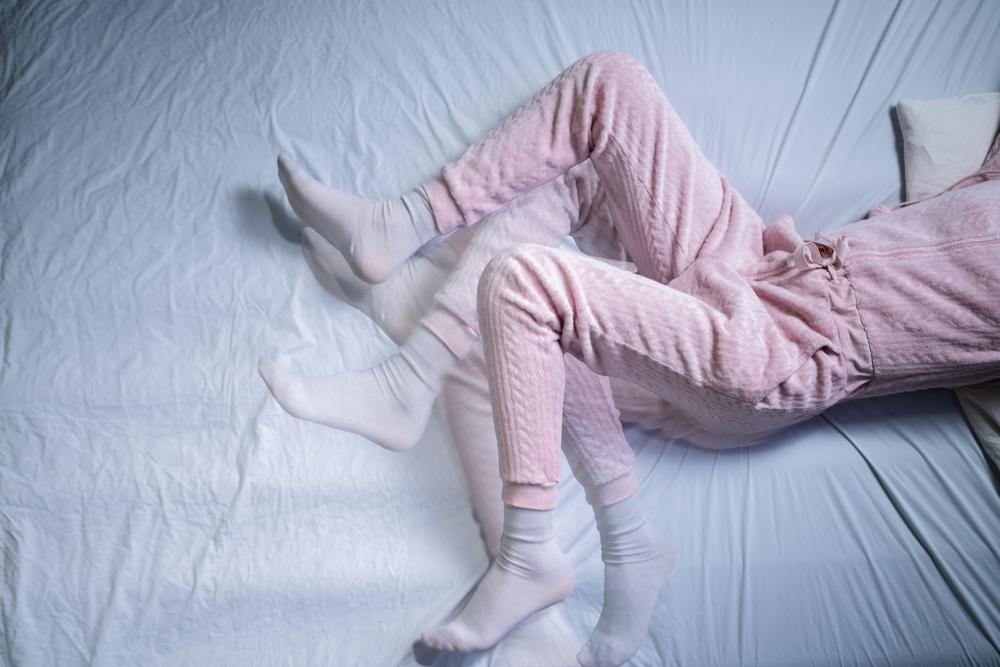
Wearing compression socks can increase blood flow and offer a massaging effect to leg muscles, which may benefit individuals with restless leg syndrome (RLS). A mild graduated pressure, typically in the 15-20 mmHg range, is often recommended for relief.
During pregnancy, women may experience heightened symptoms of restless leg syndrome. Compression socks are a non-pharmacological option that can help improve symptoms by promoting better circulation and reducing swelling and discomfort in the legs.
While generally safe, compression socks should be used with caution. They must be properly fitted as incorrectly sized stockings can be too restrictive, potentially causing skin irritations or impairing circulation. It’s advisable to consult a healthcare professional before using them, especially for individuals with certain medical conditions.
Apart from compression therapy, RLS symptoms can be managed with lifestyle changes such as regular exercise, maintaining a consistent sleep schedule, and reducing caffeine intake. Some people also find relief with medications prescribed by physicians aimed at controlling the condition’s neurological aspects.
Improving circulation helps mitigate the symptoms of RLS by ensuring proper blood flow to the leg muscles. This lessens the likelihood of the discomfort and unpleasant sensations that trigger the urge to move the legs, a hallmark symptom of RLS.
It may be safe to sleep in compression socks for some individuals with RLS, as consistent use can lower stress on the body from pumping blood and provide symptom relief. However, it’s important to select the correct compression level and speak to a doctor to ensure it’s appropriate for overnight use.
For more information on our Copper Infused Compression Socks, Click Here!